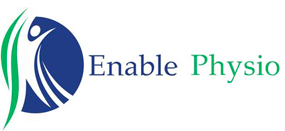The Achilles is the tendon found at the back of the lower leg. This tendon is very important, as it connects the calf muscles to the heel bone. It is the biggest tendon in the body, and without it, running and walking would be impossible. Achilles pain refers to the pain experienced as a result of a complication in this tendon.
Here are the key things you need to know about pain in the Achilles:
Achilles Tendinopathy?
One cause of pain in the Achilles is tendinopathy, this refers to painful irritation of the tendon. This often coincides with swelling and can occur either in the middle of the tendon or at the end where it attaches to the bone. Tendinopathy may develop as a result of a blow to the tendon or as an overuse injury. Overuse injuries usually occur after doing some kind of physical activity in excess of what the tendon is normally used to, a tendinopathy can be seen as a stress reaction from the tendon.
Other causes of Achilles pain
The Achilles is a commonly injured tendon and one of the more serious kinds of injury involves rupture of this tendon. This is a nasty painful injury that often requires surgery and a lengthy spell of rehab. Preventative measures can be taken to reduce the risk of this kind of injury. Tendons adapt much more slowly than muscle but they can be strengthened by exercise.
Other body structures near the Achilles can cause pain and the heel bone, the bursa and the tibial nerve are all potential sources of pain near the Achilles Tendon.
What to do about Achilles pain
If you have Achilles pain, there are a number of remedies that may work for you depending on the severity of the condition that causes the pain. If the underlying problem is a minor one, you could treat your Achilles pain by simply reducing your physical activity, switching to activities that are less strenuous, or icing the painful area. Isometric calf exercises are very good at reducing pain and restoring normal tendon function.
In cases where the underlying problem is more serious anti-inflammatory medication is often very valuable but this should be used under the guidance of a doctor. Appropriately tailored exercises for the Achilles have great benefit and this is one of the most effective ways of improving a painful Achilles problem.
Physiotherapy can offer a lot of assistance to aid a problematic Achilles Tendon, short term results through calf massage, dry needling and taping can really help with pain and rehab exercises should be provided by someone with a good up-to date understanding of tendon problems.
What you shouldn’t do about Achilles pain
You should not assume that rest alone is enough to cure your Achilles pain, in many cases it isn’t. Achilles pain often reappears and the absence of pain does not mean the problem is fixed. Although rest may get rid of pain, the inactivity involved while resting often means that the tendon becomes weaker and deconditioned, making it more susceptible to stress reactions.
The idea that massaging your tendon gives you pain relief is also a common misconception. In some cases, massaging the tendon itself can in fact increase the pain.
Many people with soft tissue injuries feel the need to stretch them out, while this may provide some short term improvement we now know that the tension from the stretch can represent a further form of stress to the tendon so current guidelines encourage people not to stretch the Achilles when it’s painful.
